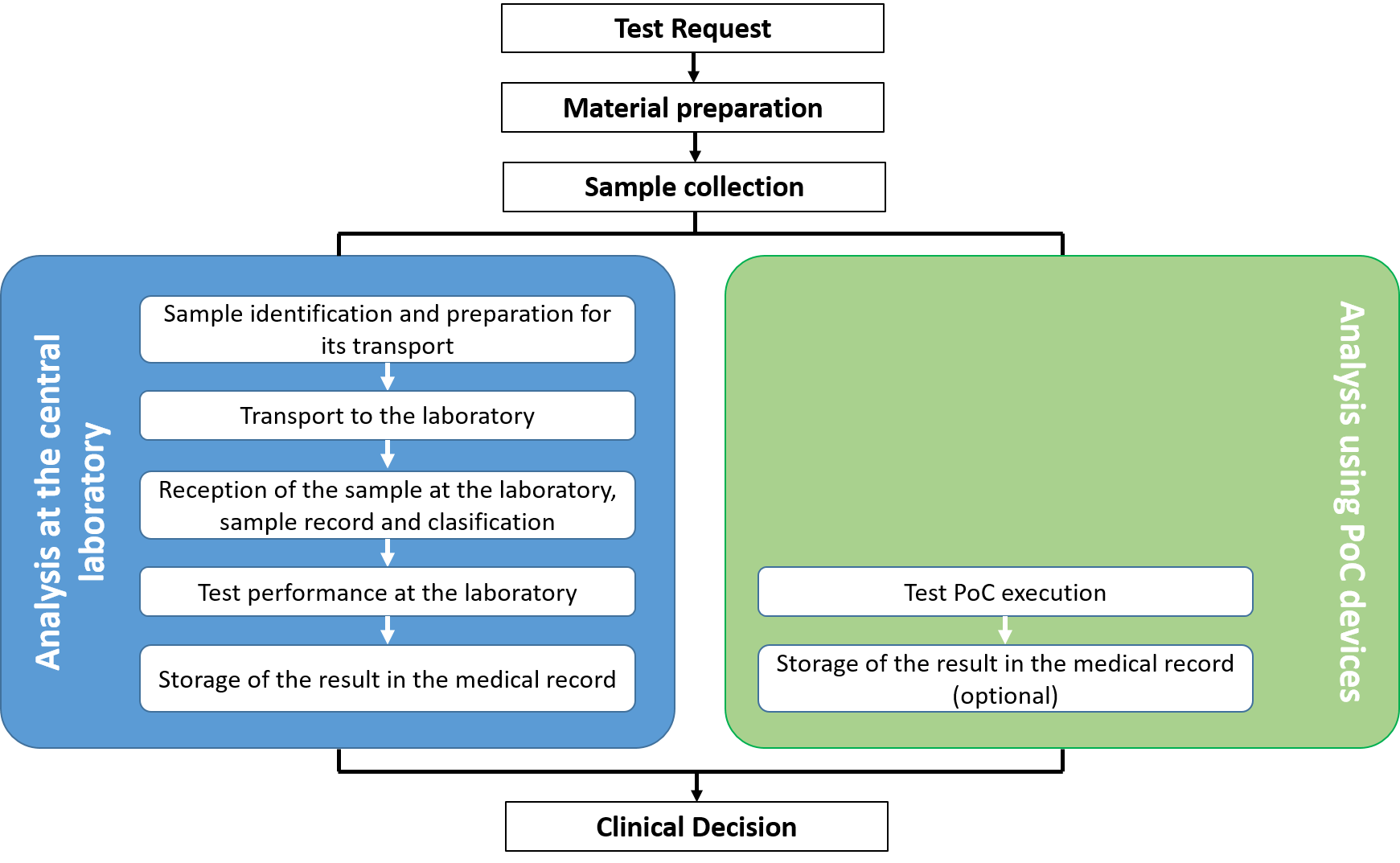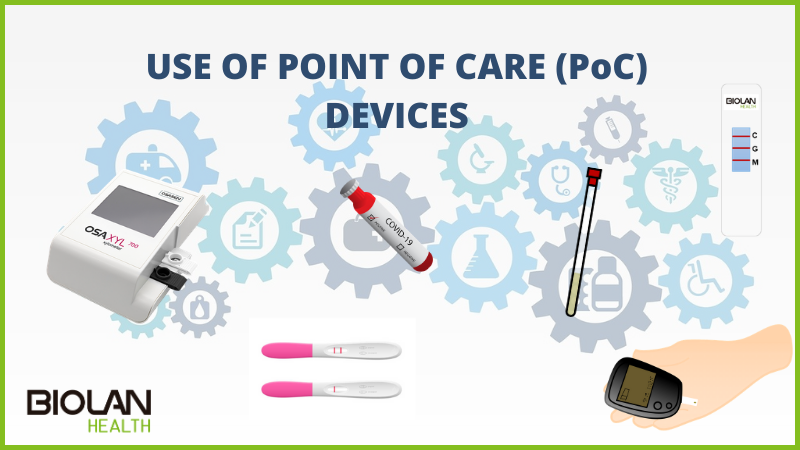With the current healthcare crisis, healthcare facilities have been saturated and patients that require routine diagnostic tests have not recieved adequate care. This situation has greatly increased the importance of having reliable and simple diagnostic and monitoring devices that allow these tests to be performed at the patient’s home, in pharmacies or in outpatient centers. This reduces the risk of having to go to health centers and speeds up certain procedures, since it is not necessary to have qualified personnel available.
In this sense, Point of Care (PoC) devices have been a revolution in terms of innovation in the development of care, monitoring and clinical diagnosis devices, thus constituting a tool to indicate the patient’s health.
The main objective of the use of Point of Care (PoC) devices is to generate rapid results, so that an early decision on the treatment can be established on the basis of the diagnosis obtained. This is possible thanks to the advances made in the development of these devices, which together with information technologies revolution have allowed the data obtained to be visualized in information management platforms where healthcare professionals can make decisions quickly and with real data.
EXAMPLES OF POINT OF CARE (PoC) DEVICE USES
On a daily basis, we live with numerous PoC devices, based on different technologies, of which we are not aware. The most famous and pioneering are, for example, glucometers used to measure blood glucose levels in diabetics, or pregnancy tests. Since the great acceptance of these two devices, numerous others have been developed and have represented a great advance in the field of clinical diagnostics, such as, among others:
- Coagulation test for anticoagulated patients.
- Cardiac marker tests, which allow early detection of coronary syndromes.
- Urine test strips.
- Drug of abuse detection test.
- Blood gas analyzer (pulse oximeter), which allows to know the oxygen saturation in blood instantly.
- Rapid test of anti-COVID-19 antibodies.
- Rapid test for COVID-19 antigens.
Thus, the use of Point of Care (PoC) devices allows the prevention, diagnosis and monitoring of numerous pathologies, improving people’s life quality.
ADVANTAGES OF USING POINT OF CARE (PoC) DEVICES
One of the main advantages is that these devices greatly simplify the analysis process in a laboratory, as can be seen in the following diagram:

Therefore, the affordability and portability of these devices represent a great opportunity to improve healthcare technology worldwide. In addition, they offer a number of other advantages over classical diagnostic methods, not only in the current situation, but also for the post-COVID-19 era, among which the following stand out:
ECONOMICAL
As they require little specialization, they are devices that, compared to other equipment used for the diagnosis and monitoring of diseases, are very economical.
PORTABLE
Most of these devices are portable, so that the analysis can be performed off-site.
SMALL SAMPLE QUANTITY
PoC devices do not require a large amount of sample, most of them are able to work with a small urine or blood sample.
MINIMALLY INVASIVE
By not requiring a large amount of sample, sample extraction procedures are minimally invasive for the patient, as is the case, for example, with capillary puncture.
FAST
They provide a result very quickly, so that a diagnosis can be made within a few minutes.
EASY TO USE
They are easy to use devices, so they do not require a great specialization for their use.
At BIOLAN HEALTH we develop and manufacture this type of PoC devices for customized technological applications. We currently have two main product lines:
- Development of lateral flow tests; including our latest product, an IgG/IgM neutralizing antibody test against COVID-19.
- Development of electrochemical biosensors, including the OSAXYL 700, an enzymatic biosensor to diagnose lactose intolerance using urine samples.
Did you like this post? You can subscribe to our newsletter to receive blog updates and the latest news!


